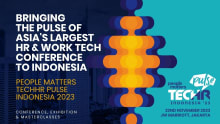Predictive analytics for recruitment, performance and turnover

I was asked to share my thoughts on various predictive models that can be used across employee life-cycle, from the time we decide to hire till the time turnover happens, voluntary or involuntary. My father, while managing approximately 50,000 employees in a Public sector company, once told me that it’s very easy to manage machines but very difficult to manage humans. That time I was a kid and didn’t really understand the gravity of the statement, but today I do.
We talk so much about dealing with the HR data and how analytics can be run on it to gain insights. If I talk about Data Mining or Machine Learning, they work on ‘stationary data’, i.e. the attributes of data do not change. If data is stationary and its underlying statistics are not going to change, then the same distribution can be applied to new data.
In contrast to this, the human data might be very different for two individuals. As a result, it will be incorrect to blindly apply the same statistical model to different individuals.
Thus one has to be very careful while applying predictive models in talent analytics space.
Let’s talk about attrition — when an employee leaves most of his colleagues know already that he is going to leave. How is it that these people are able to predict this fact when sometimes data might not be able to do the same? It is because those people connect with the employee at a very different/personal level. You know about the personal/professional circumstances associated to that person and to some extent his compensation & benefits. When we build models we don’t take into consideration each and every one of these parameters and hence these models don’t perform as well as they should.
I believe that a one off application of Talent Analytics is not such a good idea, it should be done in a holistic manner.
HR has been a lagger in terms of applying analytics and big data solutions and probably for some good reason. Multiple factors have contributed to the late amalgamation of analytics and HR, and maybe companies don’t want to make an HR professional into a statistician. At most, the HR professional should be able to understand the basic concepts of data and be able to formulate a solution basis that data. A lot of business leaders today are open to the idea of using these tools, but the problem comes while designing an actionable basis insights. Google has been the flagbearer in this space and something that is always followed at Google is in case of a doubt, ask the people what they think. Companies today run many surveys for their employees to understand their point of view. These survey mostly consist of questions in the form of Likert scale or a text box asking for comments. Likert scale responses usually get plotted as ‘bar charts’ and the text responses, depending on the size of the organization, get read by a person or go through ‘Topic Modelling’ and the top 10-20 topics will be extracted by the system. However, the bar charts will only be able to tell the leaders about parameters the employees talk about (e.g. compensation, culture etc.) but it won’t tell them what they are talking about that parameter. The leaders cannot build an actionable unless they know the exact problem at hand.
Analytics for recruitment
When a new leader joins an organization, the first thing they do is build a team. Sometimes they are even mandated while joining that they have to build a team. The leader might say that I need 25 programmers, 5 testers, 5 BI guys. This is where Talent Analytics begins, and the leader can ask him/herself if they have done a ‘talent gap analysis’. Do they need those skills in that team? While the leader might believe so, the data might not support it. It starts at a very early stage, even before you get the resumes. One should think of all possible alternatives like if those skills are already present in other teams, can they be leveraged? It has its challenges, but it’s always better to analyze the alternatives. This approach can be used from candidate sourcing, finding tags on LinkedIn and associating them to your needs to resume shortlisting. Many big organizations have improved the process of screening and interviewing by creating a cost function which optimizes the weighted parameters like, candidate’s scores, candidate’s background, and scores given by the interviewer, to find a holistic score. This score along with certain metrics like, TTH (Time to Hire), quality of the candidate, probability score of the fact that is the candidate going to join or not can be optimized to make the whole recruitment cycle a data-driven process.
Analytics for Retention Prediction
Parameters like, compensation & benefits, manager review in the yearly performance management process, 360 degree review, tenure, employee grade, skill sets, can be used for creating a retention predictor. The parameter that we are missing is the human factor. The key is to try and capture this intangible parameter. Once you have a mix of these parameters, you can put them into a predictive model and derive insights, ‘low’ being ‘high-risk’ and ‘high’ being ‘low-risk’ implying that there’s a high probability that the candidate will stay for the next 6-9 months. But one should remember that this model is very dynamic and has data that is changing at a very fast pace, for instance the economic situation is a parameter which changes every now and then. The parameters required for this model are a mix of numeric, text, ordinal and categorical data. The resulting score is a probability score. What matters is what actionable is built and how is it built basis the probability score given by the model. Let’s say the person has a high probability of leaving, then how do you measure that score and what is the actionable that you build for that. One way could be to ask the HR manager or the reporting manager to come up with an intervention.
But how do you evaluate a score given by the predictive model against the fact that whether the candidate was actually a risk of leaving or not. You can wait and watch if the person actually leaves in the next 3 months (or whatever period suggested by the model) and reach a conclusion that you model really works and lose the employee without being able to run any intervention at the right time. On the other hand, if you run an intervention basis the score given by the model and save the employee you will never be able to certify if the model was correct and whether the employee was actually going to leave. By either means, you face a risk. However, in this case, one can identify an an at-risk population and divide it into two different groups and run A/B tests. This way you can identify the percentage of employees who were at high risk in each group and run interventions for them. One can also run this A/B testing and identify the talent at risk, but there is always a risk associated wherein you might not be able to identify/save all of them. Secondly, it’s a time taking process being an iterative process.
There is no single solution to the issue of implementing predictive models to Human Resources because of the human factor.
(The article has been compiled from the insights provided by Dr. Nishant Chandra at the People Matters Talent Acquisition Conference held in Mumbai in March 2017)

















